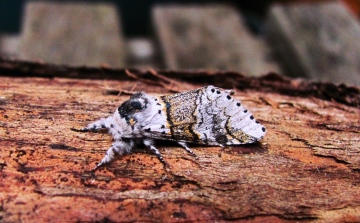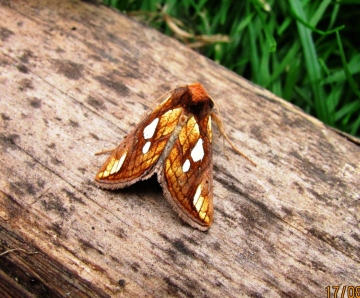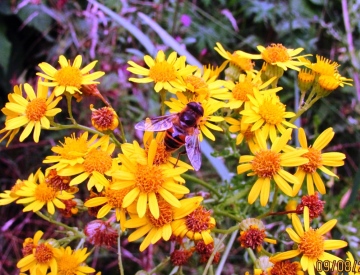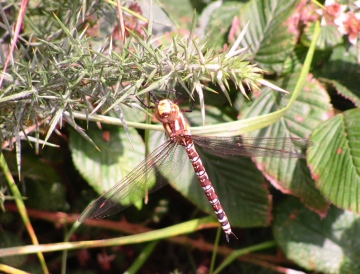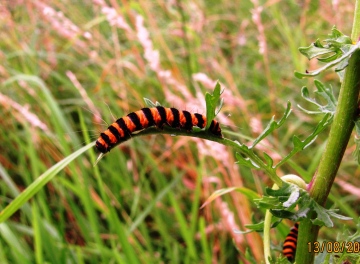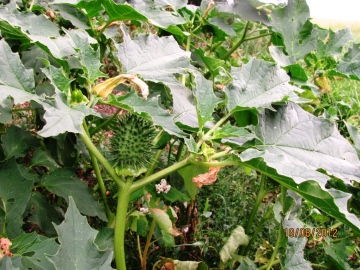Also present at dusk on these long overdue summer evenings has been a couple of Pipistrelle bats. A friend brought a bat detector one evening and this suggested that they were Soprano (as opposed to Common) Pipistrelles. Brown Long-eared Bats also occur in the garden as my neighbour once brought me one that he found clinging to the wall of his house during the day. Another was handed to me by someone who - bizarrely - found it clinging to one of the old type granite kerb-stones in Ingatestone High Street. On 12th, on Michael's advice, my bat watching extended into the early hours - it is usually far too warm to sleep much before midnight anyway on these sultry evenings we have experienced lately - and was rewarded with the sight of several shooting stars, there being only patchy light cloud. Thanks Michael.
As for the lack of insects, wasps are certainly very low in numbers. There were lots here in the early spring, presumably all Queens, and they seemed to be feeding on the sap oozing from the buds of the Norway Spruce. Have hardly seen one since. Sometimes they can be a real nuisance when moth trapping as they enter the box in search of prey, mostly the little grass moths that can occur in hundreds in midsummer, but occasionally larger species. They clip the wings off the latter before carting them off to their nests. Neither have I seen a single Hornet this summer. A couple of years ago, whilst helping with a 'moth night' at Epping Field Centre, I brought the trap inside at the end of the evening to open it up and around 30 Hornets flew out! Fortunately, they are not as bolshy as wasps. I was once stung on the tongue by a dead wasp while eating a home made mince pie that had been baked the previous day. Feeling your tongue swelling inside your mouth to a size that feels akin to that of a tennis ball is not a pleasant experience but a jab in the backside soon put me right. My grandfather was not so lucky as he was stung in the throat as a young man and nearly died, spending several days in hospital. Had he succumbed then I would not be here writing this. What a sad thought!
It is not just insects that have fared badly this wretched spring.The BTO reports that for many species it has been the worst breeding season they have records for - and they were founded in the 1930s. However, now that better weather has arrived in south-east England (but not in the north and west) a few insects have picked up in numbers, including moths; the equally beautiful Sallow Kitten and Gold Spot, below, being caught in my garden and at Blue House respectively.
Hoverflies have also responded to the warmer weather, including this Drone Fly Eristalis tenax, photographed in the garden; another was snapped up and eaten by a Southern Hawker, photographed at Fryerning Churchyard a couple of days later.
Finally, no invasive plants in the garden this year apart from Ragwort, which I encourage as it is the food plant of the Cinnabar moth, a caterpillar of which is pictured below. There was, however, a fine display of Thorn Apple (formerly knlown as Apple of Peru) beneath the bird feeders outside the Bird Observatory at Bradwell.
This species originates in South America but has successfully accompanied man on his travels throughout the world. Wikkipedia informs me that it is used in herbal medicine to relieve asthma symptoms and as an analgesic during surgery and bone setting. It is also a powerful hallucinogenic and produces intense visions. I did think of using to conjour up visions of a countryside where Turtle Doves, Spotted Flycatchers, Cuckoos, Tree Sparrows and the like abounded once more but the tropane alkaloids it contains, which are responsible for both the medicinal and spiritual properties, are fatally toxic when imbued in even tiny amounts above the recommended level - so perhaps not!



















